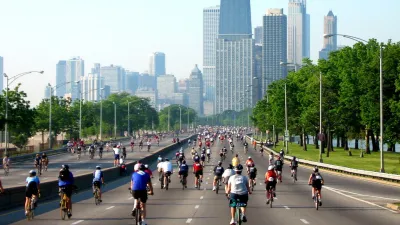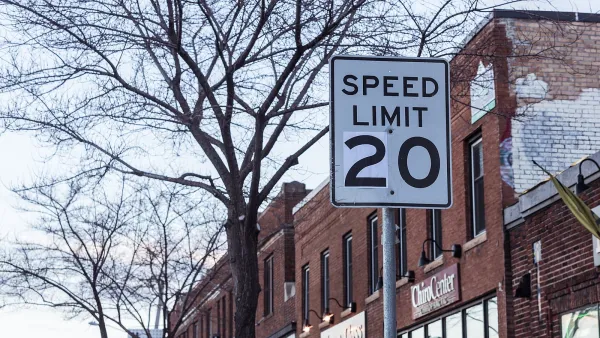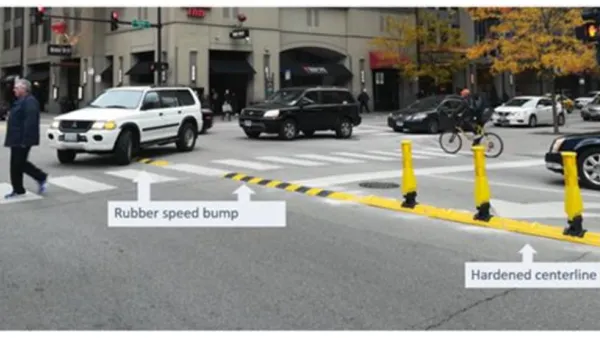Chicago is following in the footsteps of cities around the country (a few years behind the pack) in adopting a Vision Zero plan to eliminate traffic deaths and serious injuries by 2026.

John Greenfield reports on the city of Chicago's announcement this week of a Vision Zero plan to eliminate traffic deaths and serious injuries by 2026. The plan's delivery is slightly overdue, after the Rahm Administration promised the plan in fall of 2016, but Greenfield writes "[that] the important thing is that Chicago is finally getting moving on this crucial mission to reduce the carnage on our streets, where currently dozens of people are injured in crashes every day, and more than 100 people are killed in collisions each year."
Greenfield's analysis first approaches the Vision Zero plan from the angle of equity. "As I’ve discussed before, since the Vision Zero efforts will be focused on these High Crash Areas, which are largely lower-income communities of color, it’s important that any increase in traffic enforcement be done in an equitable way," writes Greenfield. The city already has a problem with giving a disproportionate number of tickets for bike infractions to Black residents of the city, as a March report revealed.
As for the capital investment components included in the plan, Greenfield reports:
Under the three-year plan, CDOT plans to improve 300 intersections to make them safer for pedestrians. CDOT will also work with the CTA to improve access and safety at 25 stations, encouraging the use of transit through targeted safety improvements in the vicinity of CTA stations and bus stops, particularly in high crash zones.
Mary Wisniewski also reports on the new Vision Zero plan in a separate article for the Chicago Tribune.
FULL STORY: At Long Last, the City Releases the Chicago Vision Zero Action Plan

Analysis: Cybertruck Fatality Rate Far Exceeds That of Ford Pinto
The Tesla Cybertruck was recalled seven times last year.

National Parks Layoffs Will Cause Communities to Lose Billions
Thousands of essential park workers were laid off this week, just before the busy spring break season.

Retro-silient?: America’s First “Eco-burb,” The Woodlands Turns 50
A master-planned community north of Houston offers lessons on green infrastructure and resilient design, but falls short of its founder’s lofty affordability and walkability goals.

Test News Post 1
This is a summary

Analysis: Cybertruck Fatality Rate Far Exceeds That of Ford Pinto
The Tesla Cybertruck was recalled seven times last year.

Test News Headline 46
Test for the image on the front page.
Urban Design for Planners 1: Software Tools
This six-course series explores essential urban design concepts using open source software and equips planners with the tools they need to participate fully in the urban design process.
Planning for Universal Design
Learn the tools for implementing Universal Design in planning regulations.
EMC Planning Group, Inc.
Planetizen
Planetizen
Mpact (formerly Rail~Volution)
Great Falls Development Authority, Inc.
HUDs Office of Policy Development and Research
NYU Wagner Graduate School of Public Service




























